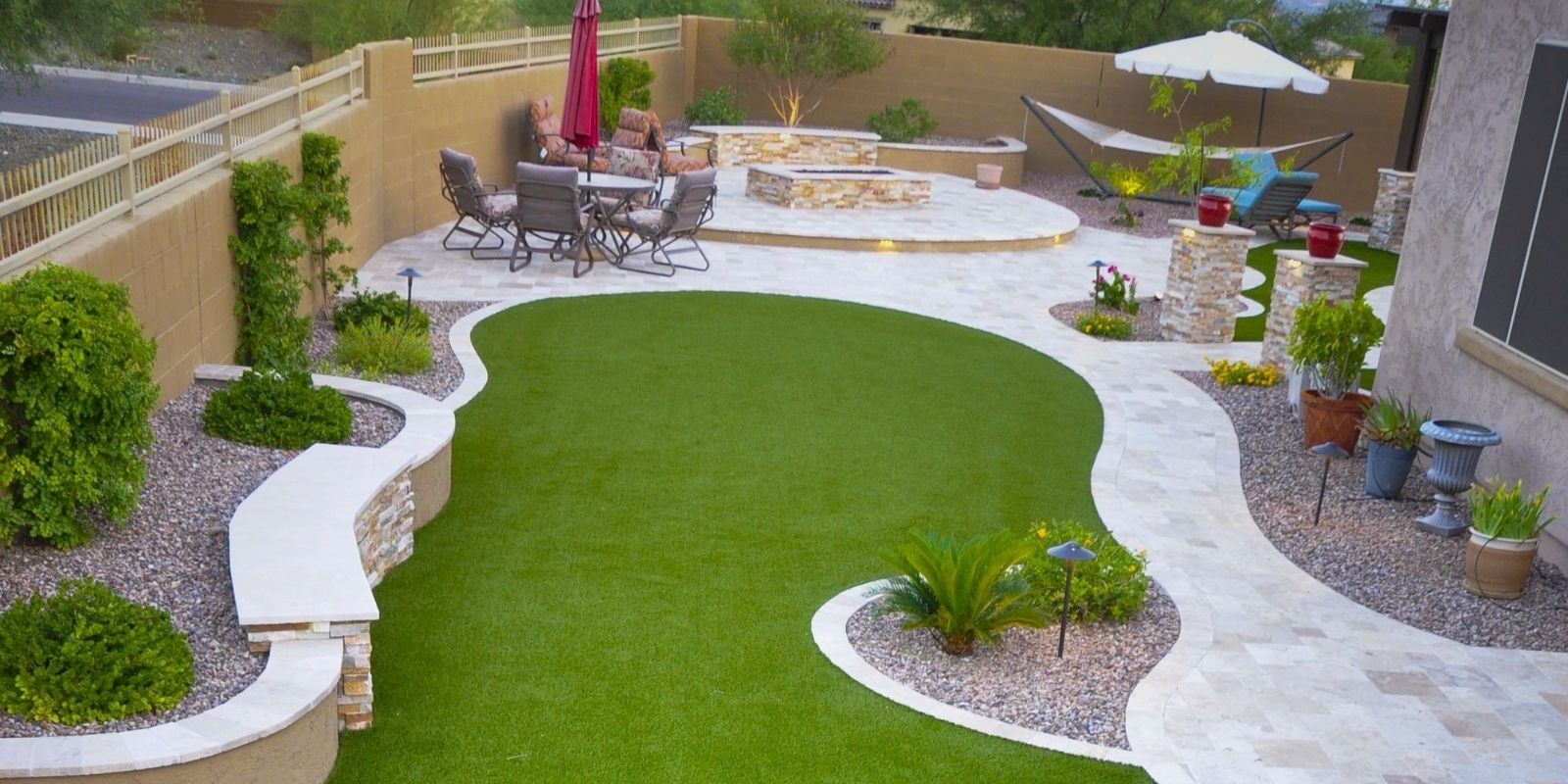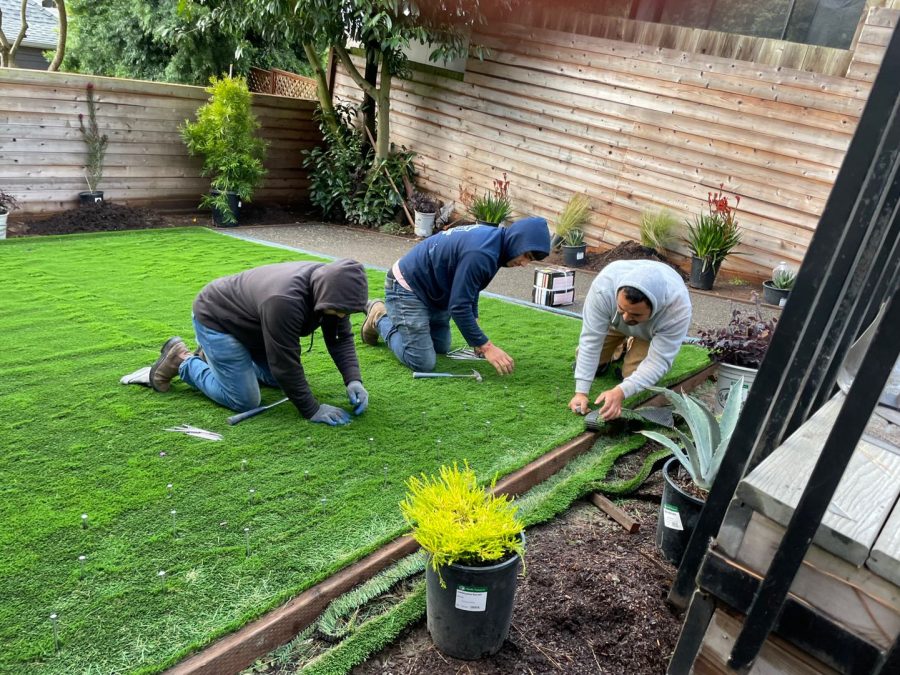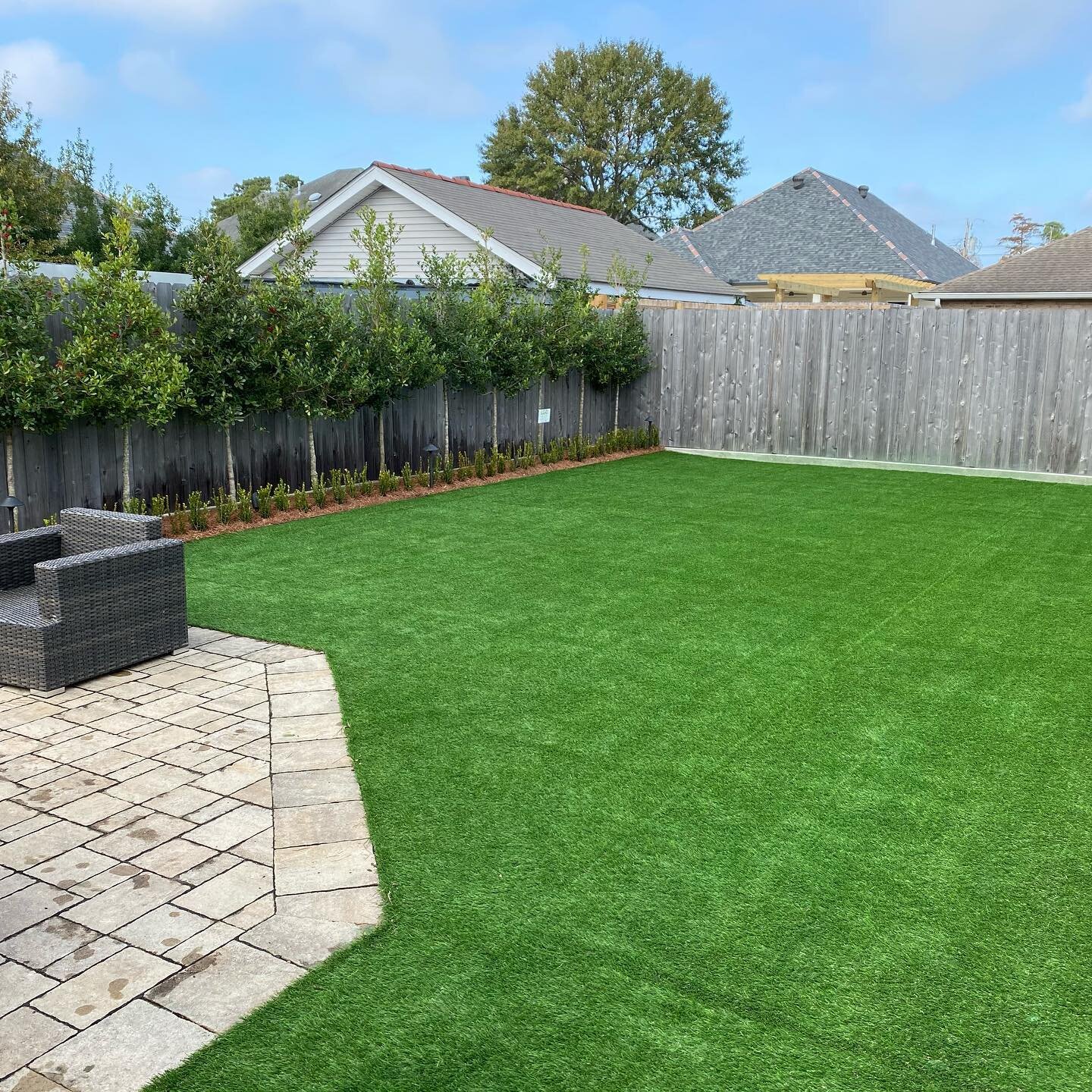Top-Grade Arizona Turf Options for a Beautiful and Lush Landscape
Top-Grade Arizona Turf Options for a Beautiful and Lush Landscape
Blog Article
See Why Homeowners Prefer Synthetic Grass for Lasting Landscaping Practices
As homeowners significantly prioritize sustainability in landscaping, synthetic grass has actually emerged as a compelling choice to standard yard. Its capability to save water, decrease upkeep initiatives, and reduce ecological impact placements it as a functional option for those seeking eco-friendly options. Moreover, the aesthetic allure and flexibility of synthetic grass accommodate varied layout preferences. The effects of this shift prolong beyond mere ease and aesthetic appeals, prompting a better examination of how these selections affect wider ecological results. What remains to be discovered is the full scope of benefits that synthetic grass can use to home owners and the atmosphere alike.
Water Preservation Benefits
One of the most considerable advantages of fabricated turf is its function in water preservation. In comparison, synthetic grass eliminates this need entirely, as it does not require watering.
Furthermore, the installation of synthetic grass can add to an extra lasting landscape. Homeowners can significantly decrease their water bills, permitting reallocation of sources to other ecological initiatives or house uses. Additionally, synthetic grass is made to endure numerous climatic problems without the need for supplementary watering, making it a perfect choice for regions dealing with water shortage.
The environmental benefits extend beyond prompt water financial savings. By decreasing water intake, synthetic grass assists to reduce the impacts of environment adjustment, protecting vital ecosystems that are intimidated by excessive water removal. As lasting landscaping methods obtain grip, synthetic grass becomes an accountable choice for property owners looking for to create green exterior areas.
Reduced Upkeep Efforts
Synthetic grass dramatically lowers upkeep initiatives compared to conventional yard yards. With artificial turf, homeowners can remove the taxing tasks connected with all-natural landscape design, such as mowing, feeding, and weeding. This not just conserves beneficial time however also minimizes physical labor, making grass care available for people of all ages.
Typical lawns require constant trimming to maintain a visually pleasing elevation, whereas man-made lawn remains consistently lush without the need for cutting. Furthermore, house owners no much longer need to use plant foods or pesticides, which are often called for to keep natural turf healthy and balanced.
Moreover, man-made grass is resilient and durable, needing minimal upkeep beyond occasional brushing and washing to remove particles. This convenience of maintenance enables homeowners to appreciate their outside spaces without the constant concern of maintenance, supplying even more time for leisure and household tasks. Eventually, the decreased maintenance efforts associated with synthetic grass make it an appealing alternative for those looking for a low-maintenance, visually appealing landscape.

Environmental Influence Decrease
There is a growing recognition of the environmental advantages connected with synthetic grass, specifically in regards to water preservation and lowered chemical usage. Traditional grass need substantial quantities of water, specifically in drought-prone regions, resulting in raised pressure on neighborhood water sources. In comparison, fabricated turf removes the requirement for irrigation, considerably minimizing water usage and promoting sustainability.
Additionally, conventional yard maintenance often involves the application of fertilizers, pesticides, and herbicides, which can add to dirt and water air pollution. Man-made turf alleviates this ecological hazard by calling for very little upkeep and essentially eliminating the demand for damaging chemicals. This not only enhances soil wellness yet likewise shields neighborhood ecosystems from toxic overflow.
Moreover, the production of all-natural grass lawns commonly includes making use of fossil gas for mowing and landscaping devices, more adding to greenhouse gas discharges. By choosing synthetic grass, property owners can significantly reduce their carbon impact related to grass treatment activities.
Aesthetic Charm and Convenience
In addition to its ecological benefits, synthetic grass offers considerable visual allure and adaptability for landscape design. Homeowners can attain a rich, green appearance year-round, getting rid of the seasonal variations commonly connected with all-natural grass. This consistent aesthetic not just boosts the visual appeal of a property however additionally adds to a polished and well-kept appearance.
In addition, synthetic grass is offered in a selection of appearances, designs, and shades, enabling personalization to match specific choices and layout motifs - Arizona turf. Whether used in residential yards, business rooms, or recreational locations, it can seamlessly incorporate into diverse landscaping designs, from modern minimalist to lavish exotic settings
The flexibility of synthetic grass extends past simple appearance; it can be mounted in numerous places, including roofs, outdoor patios, you can try this out and also interior areas, developing possibilities for distinct landscaping solutions. Additionally, it is suitable for a series of activities, from children's backyard to pet-friendly atmospheres, providing capability without jeopardizing design.
Eventually, the aesthetic charm and flexibility of artificial grass make it an appealing option for home owners seeking lasting landscaping remedies that do not compromise elegance for environmental duty.

Long-Term Expense Savings
Among the most compelling benefits of synthetic grass is its potential for lasting expense savings. Unlike all-natural lawn, which needs regular upkeep-- including mowing, watering, fertilizing, and pest control-- fabricated lawn substantially decreases these recurring costs. House owners can save a significant quantity on water bills, especially in areas where water scarcity is a pushing problem. The removal of yard treatment services better adds to monetary cost savings, as there is no requirement for customized devices or labor.
In useful source addition, synthetic grass has a lifespan of 15 to 25 years, depending on its top quality and usage. This toughness minimizes substitute costs, making it an extra economical option over time. The preliminary investment in synthetic turf can frequently be recouped through the savings accrued over time.
While the upfront price might seem greater compared to turf installment, the advancing cost savings from decreased maintenance and water usage often surpass these initial expenditures. Ultimately, the fostering of fabricated grass not only advertises a lasting landscaping remedy however also supplies home owners an economically savvy alternative that lines up with long-term budgeting objectives.
Conclusion
Synthetic turf emerges as a compelling option for lasting landscaping, supplying significant benefits in water conservation, minimized maintenance initiatives, and diminished environmental influence. As communities visit this website significantly focus on environmentally friendly techniques, the fostering of synthetic lawn stands for a progressive step towards attaining sustainable and resilient landscapes.
In addition, artificial grass is made to endure numerous weather conditions without the need for extra watering, making it an optimal option for areas dealing with water shortage. (Arizona turf)

Synthetic turf emerges as an engaging choice for sustainable landscaping, offering significant benefits in water preservation, lowered maintenance efforts, and decreased environmental effect.
Report this page